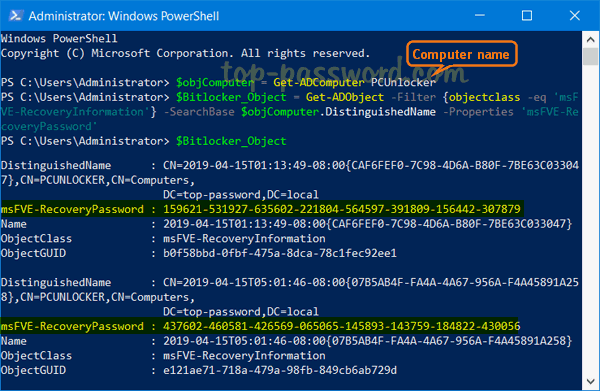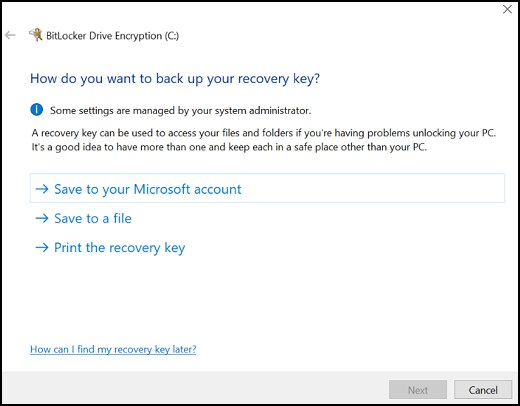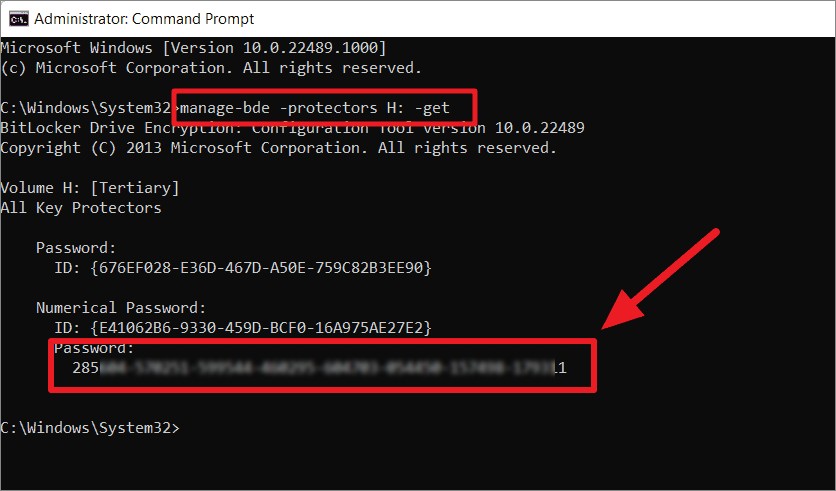

- #HOW TO ENTER BITLOCKER RECOVERY KEY WINDOWS 10 HOW TO#
- #HOW TO ENTER BITLOCKER RECOVERY KEY WINDOWS 10 WINDOWS 10#
Typically, when you get to a point when you need to enter the recovery key, the BitLocker recovery key ID is already displayed on your screen. Unless your organization’s admins provide a way for users to find recovery keys on their own, the default choice is for you to call them and ask. Unfortunately, finding BitLocker recovery keys from the Active Directory is not readily available for users.
#HOW TO ENTER BITLOCKER RECOVERY KEY WINDOWS 10 HOW TO#
In the next sections, you will learn how to perform key recovery to find the BitLocker recovery keys from Azure Active Directory, Active Directory, and Microsoft Account Finding the Recovery Key from Active Directory If you chose to save to a file, USB, or to a printed document, then you’d obviously know where to find those recovery keys whenever you need them. You’ve seen in the previous sections how to save a backup of your BitLocker recovery keys. Once the save operation is complete, you can click Finish to exit the BitLocker management. Click on the option to Save to your cloud domain account. Then, you will be presented with options, as shown below. To take advantage of this option, go to the BitLocker management in Control Panel.

If your computer is joined to an Azure Active Directory domain, saving your BitLocker recovery key to your Azure AD domain account is possible. Saving the Recovery Key to Azure Active Directory If you need to learn more about saving BitLocker recovery keys in Active Directory, you can visit – Store BitLocker Recovery Keys using Active Directory. In situations where group policy is applied, when BitLocker is turned on for a drive, there’s no action required from you to backup your drive’s BitLocker recovery key. This is done by deploying a group policy to select users or the entire domain. Saving the Recovery Key to Active DirectoryīitLocker keys can also be automatically saved in Active Directory Domain Services. Save the recovery key to the Microsoft accountĪfter clicking on the Save to your Microsoft account option, the recovery key will be saved to your Microsoft account quickly without any more messages. To access BitLocker management, go to Control Panel -> System Security -> BitLocker Drive Encryption.
#HOW TO ENTER BITLOCKER RECOVERY KEY WINDOWS 10 WINDOWS 10#
Accessing BitLocker Managementīefore you can manage your BitLocker drive device encryption, you must first access the BitLocker management on your Windows 10 computer. In turn, these backup methods should help you find your BitLocker recovery keys when you need them.

In this section, you’ll learn about each of the possible ways to back up Bitlocker recovery information. There are several ways you can store or back up BitLocker keys both automatically and manually from your disk. Some examples are applicable only when using a domain user account, a Microsoft account, Azure Active Directory user account, or a local user account.Īlso, if you are not familiar with BitLocker, or if you just want a refresher, you may want to read about the BitLocker Overview first.

The examples in this article do not apply to Windows 10 consumer editions. This article covers working with BitLocker that Microsoft includes in the business editions of the Windows 10 operating system. Unlocking an Encrypted Fixed or Removable Drive.Unlocking an Encrypted Operating System Drive.Finding the Recovery Key From Azure Active Directory.Finding the Recovery Key From Your Microsoft Account.Finding the Recovery Key from Active Directory.Saving the Recovery Key to Azure Active Directory.Saving the Recovery Key to Active Directory.Saving the Recovery Key to Your Microsoft Account.Printing the Recovery Key to Paper or File.


 0 kommentar(er)
0 kommentar(er)
